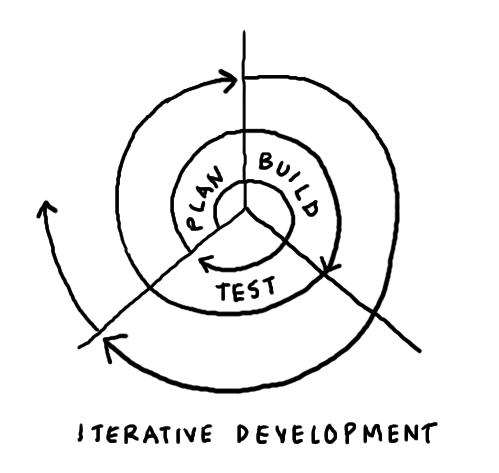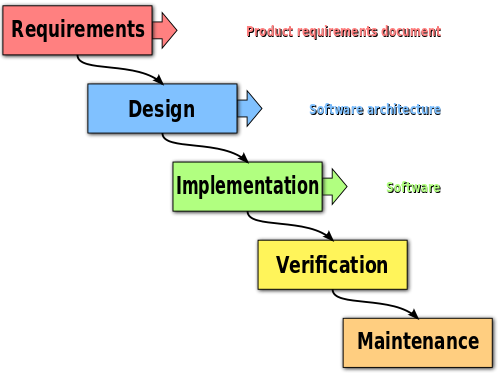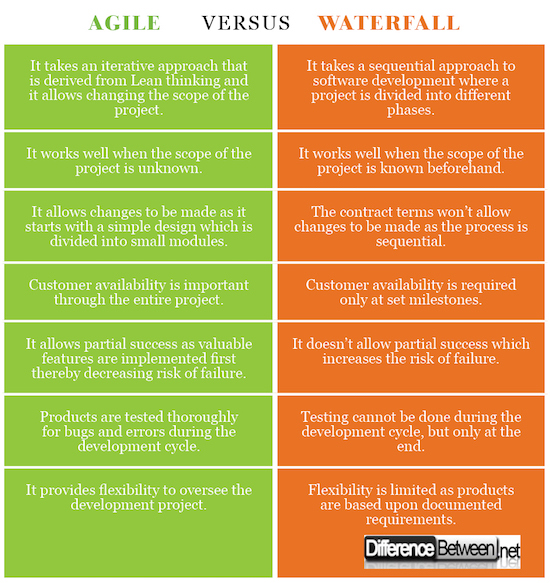Difference between Agile and Waterfall
There’s more than one way to accomplish a task and that goes for software development too. A developer has to make hundreds of decisions and go through different approaches over the course. One of the very first decisions he has to take is to choose the right development methodology. Agile and Waterfall are the two most common yet reliable methodologies for software development. Well, both serve the same purpose which is to find the best possible approach to get the project done in the least time possible, but they do that very differently. Both the approaches have been used to implement large-scale ERP (enterprise resource planning) projects for quite some time now. While both are two sides of the same coin, they have their fair share of differences.
What is Agile?
Agile is one of the most prominent software development methodologies that follows an incremental approach to completing tasks. The idea is to deliver products quicker using ERP implementations while preserving the integrity of the methodology. It’s a project methodology that is derived from Lean thinking where requirements and solutions advance through a collective collaboration between the teams and the end users. It’s a modern approach to development which emphasizes on adaptive learning, incremental delivery, evolutionary development, and continuous iteration. It allows changes to be made during the development cycle which provides flexibility to oversee the progress of the project thereby reducing the risk of failure.
What is Waterfall?
Waterfall is a plan-driven traditional approach to development which follows a sequential design process which can be rigid at times. The development cycle is divided into a series of events from documenting requirements to product delivery. Developers are only allowed to proceed after successful completion of one phase. Each phase must be thoroughly reviewed and approved by the customer before developers move on to the next phase. Unlike Agile, it doesn’t allow for changes to be made during the development cycle which makes it almost difficult to undo the code thereby increasing the risk of failure. However, the progress can be easily measured as it requires developers to create a paper trail for each phase of the development cycle allowing for a smooth and predictable workflow.
Difference between Agile and Waterfall
1) Methodology of Agile and Waterfall
Both Agile and Waterfall are two of the most prominent software development methodologies used for ERP projects to deliver high value products in the least time possible. However, despite a common goal, they use different approaches to get the projects done. While Agile follows an incremental approach to get things done, Waterfall uses a sequential design process.
2) Approach in Agile and Waterfall
Both are viable methods used in project management but in different ways. Waterfall uses a traditional approach which can be rigid at times and where the whole development process is divided into a series of events starting from conception and all the way through to production. Agile, on the other hand, is newer than Waterfall and uses an incremental approach to lean development.
3) Scope of Agile and Waterfall
Waterfall is more like plan-driven which see analysis, design, coding, implementation, and testing as different phases of a software development project. It works well when scope of the project is known beforehand, but it limits changes thereby restricting adaptability. Agile, as a modern approach, is open to changes comes at a price of course, but it works well when scope of the project is unknown.
4) Design Process in Agile and Waterfall
Agile begins with a simple project design, starting with small modules over a set period of time. The phases of development process run parallel with regular feedbacks and a backlog is maintained to keep tabs on the progress. On the contrary, Waterfall is a sequential process which doesn’t oversee the progress of the project. A developer can only jump to the next step after successfully completing the first step because it follows a sequential approach.
5) Prioritization in Agile and Waterfall
Contract terms in Agile methodology allows partial success of the project thereby decreasing risk of failure. As a modern approach, it prioritizes process based on value which requires valuable features to be implemented first thereby reducing the risk of unusable product. Waterfall, on the other hand, is all about the “all or nothing” approach which increases the risk of failure because it limits the partial success of project.
Agile vs. Waterfall: Comparison Chart
Summary of Agile vs. Waterfall
Both Agile and Waterfall are the two most popular software development methodologies used in ERP projects, but they follow different approaches to serve a common goal; that is to deliver the required product in the least time possible free of bugs and errors. Agile follows a more incremental approach to software development which provides the flexibility to oversee the progress throughout the development cycle. Waterfall, on the other hand, does everything sequentially starting from conception and initiation to implementation and maintenance. Developers can only proceed to the next phase after successfully completing the first phase which restricts changes thereby increasing the risk of failure. Agile allows changes to be made during the development cycle which decreases the risk of complete failure.
- Difference Between Caucus and Primary - June 18, 2024
- Difference Between PPO and POS - May 30, 2024
- Difference Between RFID and NFC - May 28, 2024
Search DifferenceBetween.net :
Leave a Response
References :
[0]Schwaber, Ken. Agile Project Management with Scrum. London: Pearson, 2004. Print
[1]Shore, James and Shane Warden. The Art of Agile Development. Sebastopol: O’Reilly Media, 2008. Print
[2]Charvat, Jason. Project Management Methodologies. New Jersey: John Wiley & Sons, 2003. Print
[3]Image Credit: https://www.flickr.com/photos/davegray/6865783267
[4]Image Credit: https://upload.wikimedia.org/wikipedia/commons/thumb/e/e2/Waterfall_model.svg/500px-Waterfall_model.svg.png



